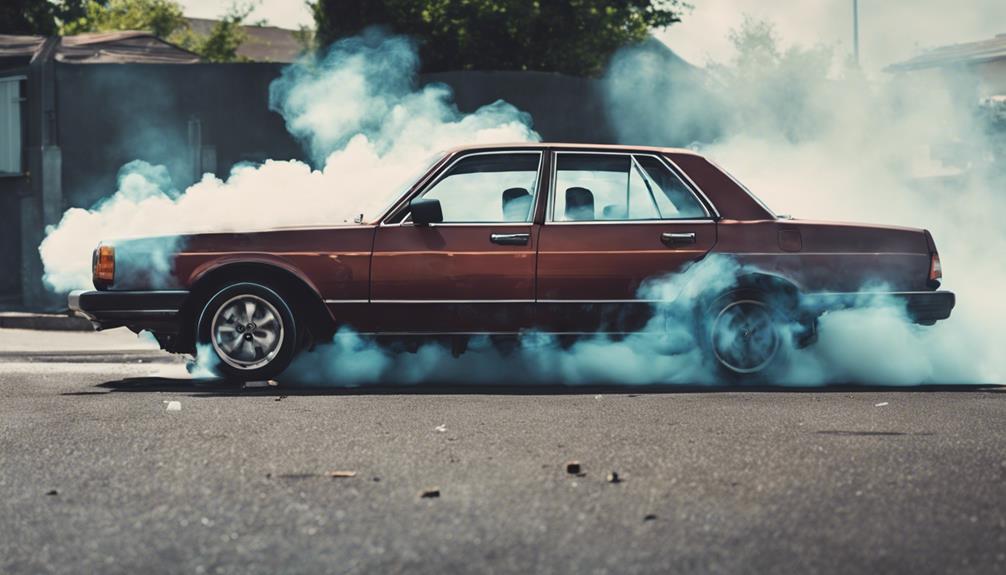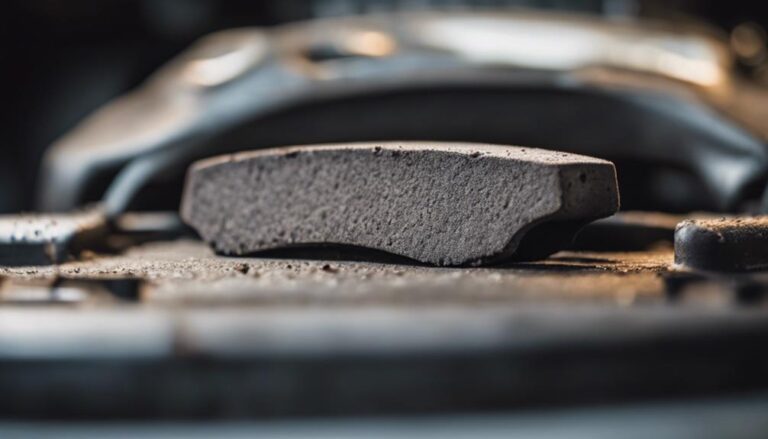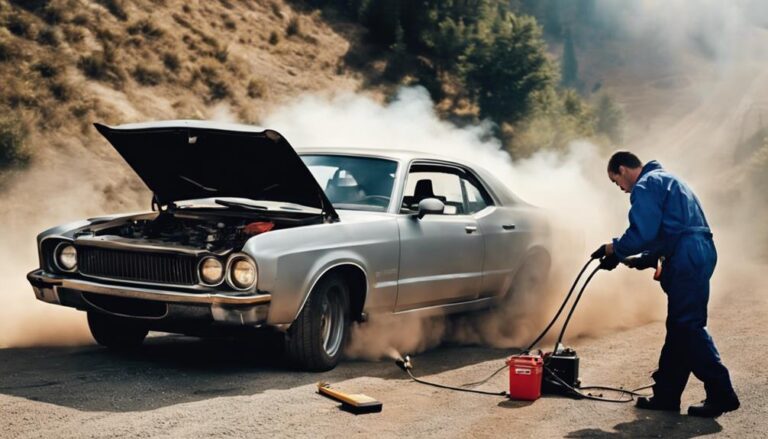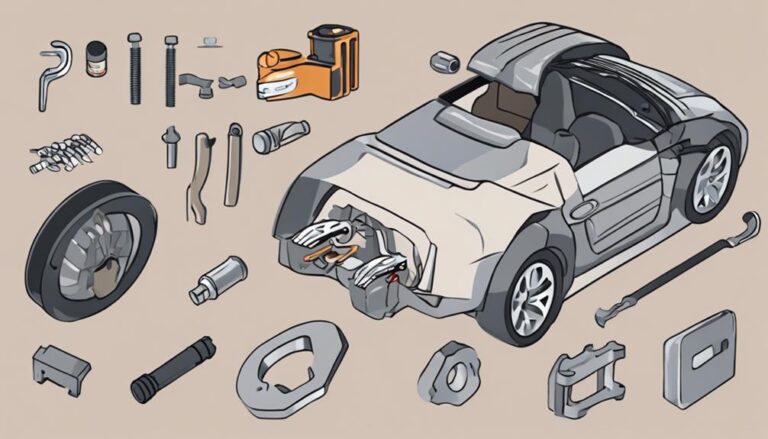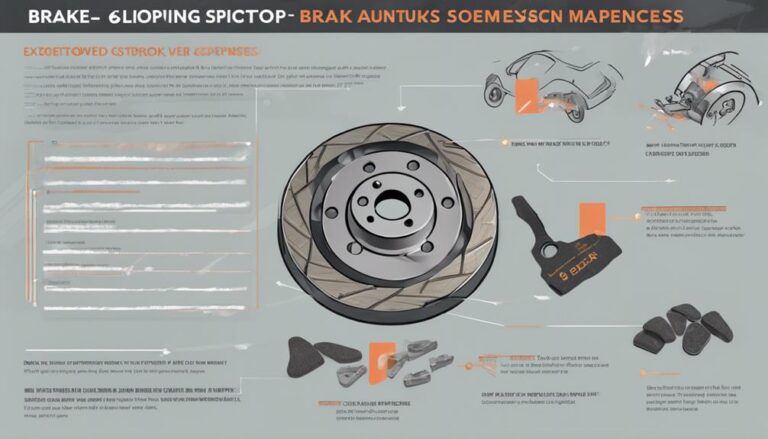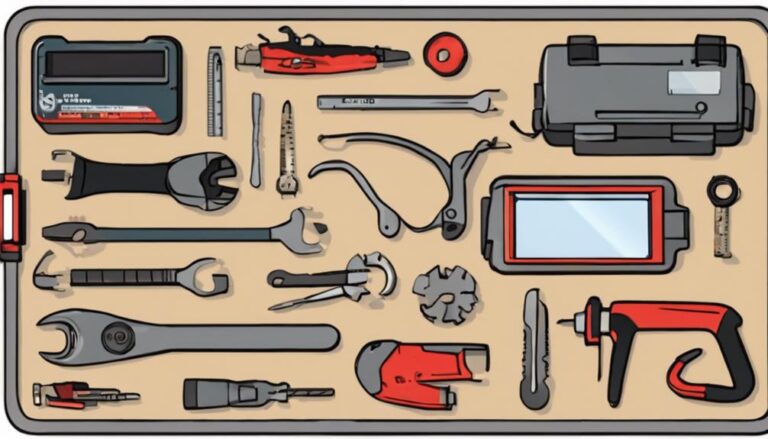Troubleshooting Common Brake System Problems: A Guide
If you're thinking, 'I'm not a mechanic, so how can I possibly tackle brake issues?' Don't worry; troubleshooting common brake system problems is more manageable than you think.
From understanding brake fluid leaks to dealing with brake system noises, this guide equips you with the knowledge needed to handle these issues effectively.
By the end, you'll feel confident in recognizing and addressing common brake problems, ensuring your safety on the road.
Key Takeaways
- Identify brake fluid leaks by wet spots and sweet smell for timely repairs.
- Address worn brake pads promptly to prevent rotor damage and ensure safety.
- Resolve brake pedal vibrations by inspecting lines, pads, and calipers for issues.
- Fix sticking brake calipers with cleaning, lubrication, or rebuilds for proper functionality.
Identifying Brake Fluid Leaks
If you notice wet spots or puddles under your car, especially near the wheels, you may be dealing with a brake fluid leak. Understanding brake fluids is crucial in identifying this issue.
Brake fluid leaks can often be identified by their distinct oily texture and slightly sweet smell. Common areas where leaks occur include the brake lines, calipers, wheel cylinders, and master cylinder. When inspecting for leaks, also check for corrosion on the metal components of the braking system, as this could indicate a leak.
Loss of brake fluid due to leaks can lead to decreased braking performance, which poses safety hazards. Promptly checking for and addressing brake fluid leaks is essential for maintaining the integrity and effectiveness of your braking system. Regular inspections and maintenance can help catch leaks early and prevent potential accidents on the road.
Addressing Worn Brake Pads
Inspecting and replacing worn brake pads is crucial for maintaining optimal braking performance and safety on the road. Brake pad replacement is a key aspect of brake pad maintenance. Worn brake pads can result in decreased braking performance, leading to longer stopping distances and potential safety hazards.
To address worn brake pads, visually inspect them for thickness and wear indicators regularly. If you hear grinding or squealing noises during braking, it may indicate the need for brake pad replacement. Ignoring worn brake pads can't only compromise braking efficiency but also damage other vital brake components like rotors, resulting in costly repairs.
Resolving Brake Pedal Vibrations
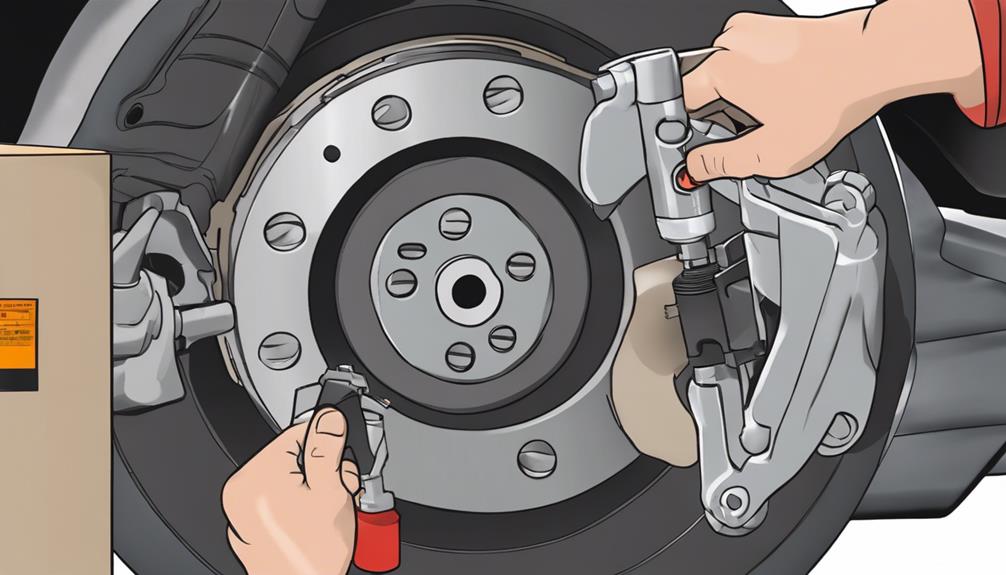
To resolve brake pedal vibrations, addressing potential causes such as warped rotors or damaged calipers is essential for ensuring smooth braking performance and vehicle safety.
Begin by inspecting the brake lines for any leaks or damage that could affect the system's hydraulic pressure. Next, perform a thorough examination of the brake pads to determine if their material composition is suitable for your driving habits.
Consider resurfacing the rotors to eliminate any uneven surfaces that may be causing vibrations. Additionally, ensure proper alignment of the calipers to prevent shuddering sensations when braking.
Remember that improper wheel torquing or cleaning can also contribute to brake pedal vibrations and pulsations. By taking these steps and maintaining a proactive approach to brake system care, you can effectively address and resolve brake pedal vibrations, promoting a safer and more enjoyable driving experience.
Fixing Sticking Brake Calipers
Fixing sticking brake calipers requires thorough cleaning and lubrication of the caliper slides to address common causes such as corrosion, debris buildup, and lack of proper lubrication. To resolve this issue effectively, follow these steps:
- Inspect Caliper Slides: Check for any signs of corrosion, dirt, or debris on the caliper slides. Clean them thoroughly to ensure smooth movement.
- Caliper Piston Maintenance: Examine the caliper pistons for any signs of sticking or uneven movement. Clean the pistons and lubricate them using brake grease to prevent future sticking.
- Consider Brake Caliper Rebuilds: If cleaning and lubrication don't resolve the sticking issue, consider rebuilding the brake caliper. This process involves disassembling the caliper, replacing worn-out components, and reassembling it to ensure proper functionality.
Dealing With Brake System Noises

To address brake system noises, you must promptly investigate and identify the source to ensure safe and effective operation of your vehicle. Screeching, grinding, or squealing sounds are common indicators of worn brake pads or damaged rotors. Ignoring these noises can result in increased stopping distances and potentially costly repairs.
Some brake pads are equipped with wear indicators that produce high-pitched squealing when replacement is necessary. However, if you hear metal-on-metal grinding noises, it suggests severe damage to both the brake pads and rotors. Prompt inspection and replacement of worn brake components are crucial to prevent further damage and maintain safe braking performance.
Conducting regular brake system maintenance and being proactive with noise diagnostics can help you address issues early on, saving you time and money in the long run. Remember, ensuring the integrity of your brake system is essential for your safety on the road.
Frequently Asked Questions
How Do You Troubleshoot a Brake System?
To troubleshoot a brake system, start by checking fluid levels and inspecting pads for wear. Listen for unusual noises and test pedal responsiveness. Monitor the brake warning light for indicators. Regular maintenance is crucial for safety.
Why Does My Car Keep Saying Brake System Problem?
When your car keeps displaying the 'Brake System Problem' warning lights, it could be due to sensor malfunction. Ignoring it risks safety. Address the issue promptly by consulting a mechanic to ensure your brakes function properly.
What Are Some Symptoms of Common Brake Issues?
If you notice brake warning lights or unusual noises like screeching, it could mean worn brake pads or damaged rotors. Address these promptly to ensure safe braking performance. Ignoring these signs may lead to more severe issues.
What Main Steps Should You Follow to Diagnose a Brake System?
When diagnosing a brake system, first, check brake fluid levels for safety. Next, inspect brake pads for wear. These steps are crucial for maintaining braking performance. Ensure brakes work effectively by following these essential procedures.
Conclusion
In conclusion, when it comes to troubleshooting common brake system problems, remember to stay vigilant and proactive.
Just like a well-oiled machine, your brakes require regular maintenance to ensure smooth operation.
Don't let brake issues linger like a ticking time bomb – address them promptly to avoid potential hazards on the road.
Remember, prevention is key to keeping your brakes in top condition and ensuring a safe driving experience.

